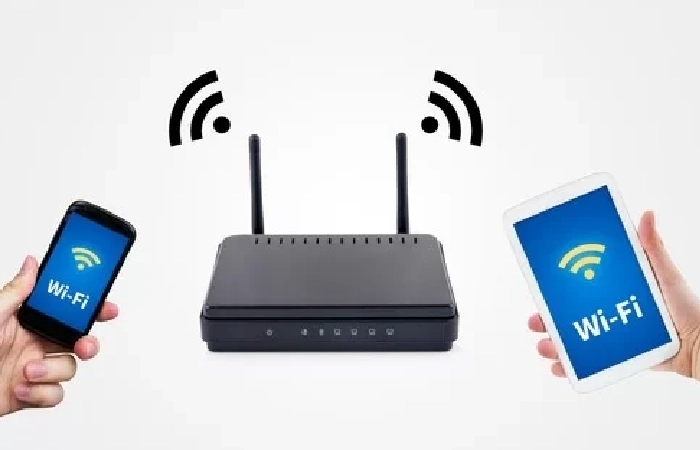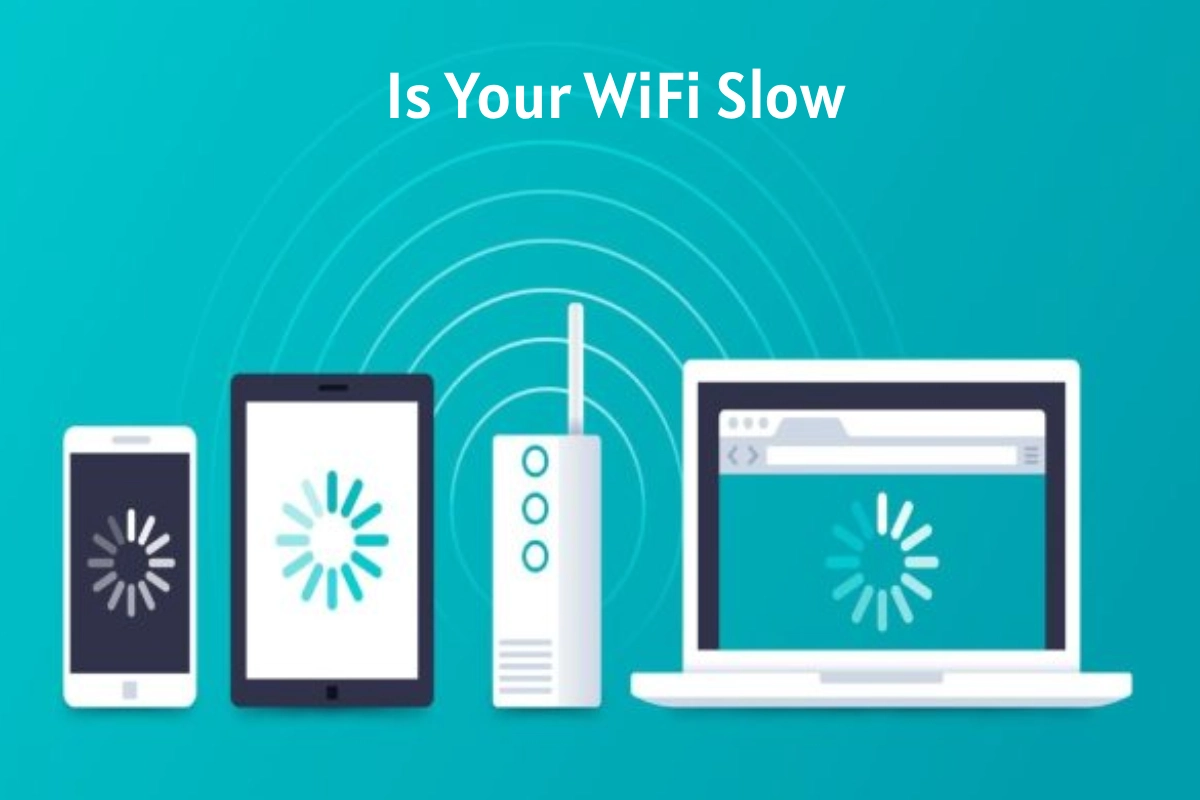About Is Your WiFi Slow
Is your WiFi slow: If you still get consistent speed test results linked to your router via Ethernet, your speed issue is most likely caused by something on your WiFi network. Slow WiFi can come from all things, including physical obstacles like walls, signal interference, or outdated equipment.
Slow WiFi can be annoying, especially when studying or working from home. Low internet speed can ruin your day, whether you upload in-service files to the cloud or stream your favorite show on Netflix. Fortunately, slow WiFi is a problem you can fix. Slow WiFi can usually be set with a few simple steps. Follow this guide as we list some methods to fix WiFi connection issues.
Is Your WiFi Slow? Then How to Fix

Many factors can cause WiFi to be slow. Here are some procedures to identify and fix WiFi connection issues.
1. Do you have a Slow Internet Speed?
Before you accomplish that, if you’re struggling with slow internet speed, make sure your internet plan’s marketed speed matches the internet speed you’re getting. To do this, visit any website that allows you to amount Internet speed, e.g., B. speedtest.net or fast.com. In that case, we’d say your connection is excellent, and to speed things up, you can always upgrade to an upgraded plan that offers faster internet speeds.
2. Restart the WiFi Router to Fix WiFi Issues
Sometimes all you need to do with your WiFi router is a fast restart to fix WiFi connection matters. First, turn off your WiFi and go it back on after a few seconds, then checked if you still have slow internet speeds. If this doesn’t fix your WiFi issues, try resuming your computer, phone, or other device. Sometimes the motive behind slow internet speed is just one of your devices, not the internet connection.
3. WiFi Router Location Could Fix Slow WiFi
Are you still facing slower internet speeds even though you have a high-speed internet connection and a good enough WiFi router? The problem could be in the positioning of your router. It is always recommended to place the router in a higher place, e.g., B. above the cabinet. Before committing to one, you can always move the WiFi router to different locations around your home or work to see which area has the best signal strength. WiFi signals can usually penetrate walls and other objects, but thicker walls or metal sometimes impede movements. In such scenarios, keeping the router away from microwave ovens or refrigerators is always recommended and, as mentioned above, places the router in an optimal elevated position.
4. Align the Router Antennas
Placing the antennas on a WiFi router only redirects WiFi signals in one direction. Therefore, always align the antennas in different directions. For example, many WLAN routers are equipped with two or three antennas. In such a scenario, align the antennas in vertical and horizontal directions so that the WiFi signals can cover a larger area.
5. Use a WiFi Solid Security Standard
If your WiFi security isn’t strong enough, gaining access to the password can be easy. For example, our neighbor could be stealing your WiFi connection, which could be why you have a slow WiFi connection. Therefore, using the WPA2 security protocol on your router is always recommended. You can change this through your router settings. To usual a WPA2 password, admission WiFi settings by typing your router’s IP address into any browser on your phone or computer. You can find your router’s IP address on the back of the router, or you can find it by successful to your WiFi system settings on your phone or computer.
6. Single Connection, Multiple Users
You may have a high-speed Internet connection shared by multiple users at home or work. While a WiFi router won’t slow down the Internet when numerous people are using it, it will increase your available bandwidth. This means you can download files from the cloud while your child downloads the latest PlayStation Network game while your partner watches her favorite movie or TV show. In such a scenario, everyone could face slow WiFi as each device uses a significant part of the available bandwidth.
In this circumstance, you can try to reduce the load on your Internet connection by pausing any streaming or downloading. This could result in better WiFi speeds for others. Modern routers support technologies that guarantee the same bandwidth on all devices,
In this circumstance, you can try to reduce the load on the Internet connection by pausing one of the streams or downloads. This could result in better WiFi speeds for others. However, modern routers support technologies that ensure the same bandwidth across all devices. Therefore, your internet speed may be the bottleneck if you encounter problems with even one of these routers.
7. Use QoS to Fix Slow WiFi
One of the best tools often overlooked is QoS or Quality of Service, whose job is to share the available bandwidth on your WiFi network between applications. For example, you can watch the animal video on YouTube in 4K resolution without stuttering with optimal settings while ensuring your latest game is downloaded on Steam. QoS allows you to decide which service to prioritize on your WiFi network and allocate bandwidth accordingly. Note that there are different customs to access QoS settings for routers, which means opening QoS on a Netgear router changes from accessing it on a TP-Link router. To check your router’s QoS settings, enter your router’s IP address into a browser and find the QoS tab to enter the settings.
8. Update the Router Firmware to Fix WiFi Connection Matters
Software updates for your router are vital as they improve its stability, performance, and security. Most routers available today can update automatically. Hence, if you have an older router, you may need to install software updates manually. Different routers have different ways of informing the software. For more information, enter your router’s IP address into any browser on your phone or computer to contact your router’s WiFi settings.
the DNS Server
All ISPs, regardless of their different internet plans, use a DNS (Domain Name System) which helps to translate the IP address of servers into domain names like youtube.com or facebook.com. Most of the time, the default DNS server provided by ISPs is slow and unreliable, and because of this, simply changing your DNS server can bring relief and a much-needed gain in internet speed and performance. You can read our attendants on how to change DNS on iOS or your computer to learn how to change DNS. For those using Android, go to the WiFi settings on your phone and look for the Private DNS option. By default, it is disabled on most Android phones, but you can set it to Automatic, or you can even set it manually by clicking on the hostname of the private DNS provider.
10. Use a WiFi Analyzer
A WiFi analyzer app can effectively find the best channel that is least crowded and offers minimal interference. Two leading bands are used for WiFi communications: 2.4 GHz and 5 GHz. The 5 GHz band is less crowded but has less range, so keep that in mind when analyzing the results of these tools. These bands are auxiliary and divided into multiple channels. A WiFi analyzer will help determine which WiFi networks are broadcasting on the same media so you can decide on an alternative. Various free and paid WiFi analyzer apps are available on the Internet to help you solve such problems. You can try some popular WiFi analytics options for phones and computers like NetSpot, InSSIDer, NetX, and Network Act Monitor, to name a few.
11. Change Your WiFi Channel

If you find your router’s IP address and use it to access your WiFi settings in any browser, you will find Channels under WiFi settings. There are 14 channels in total, and the first thing to find out is which WiFi channel is the most used in your area. Once you’ve established this, you can always try to find and select a track that doesn’t overlap and is far enough away from the other media. Most ISPs set the channel settings to automatic. Still, we’d tell you to play around and discover the most transparent channel for the best optimal experience if you have slower internet speeds.
12. Reset Your Device’s Network Settings
Note that there are different customs to access QoS settings for routers, which means opening QoS on a Netgear router changes from accessing it on a TP-Link router. To check your router’s QoS settings, enter your router’s IP address into a browser and find the QoS tab to enter the settings. The steps are different for each device, and you will need to re-enter your WiFi password to use the Internet. Our handy attendant will help you find your WiFi password if you’ve forgotten it.
13. Buy a New WiFi Router
Getting a high-speed internet idea doesn’t solve the quest for high internet speeds. But your WiFi router also plays a role. So you can get a high-speed internet strategy but can’t get the most out of it if your WiFi router is old or doesn’t chance the new WiFi standards. To resolve this issue, try receiving a WiFi router that supports 802.11ac (known as WiFi 5) or at least 802.11n (known as WiFi 4). However, if you’re looking for for a super-fast WiFi router. You can buy one that supports the latest 802.11ax standards (known as WiFi 6). However, remember that routers that support WiFi 6 measures are costly, as this technology is still under development.
14. File a Complaint with Your ISP
If none of the above procedures work for you. You should probably contact your ISP and let the professionals deal with the problem. Sometimes it’s always better to call and file a complaint than to try to fix things yourself. And if you’re ISP has a good track record of customer service, your problem can be set in no time.
15. Change Your ISP
If your current ISP can’t meet your needs in your area, and you’re still constantly struggling with slow internet speeds. Your last resort is to find and switch to a better connection. In such conditions, it is always best to research which link in your area offers the best value for money. It’s also good to talk to your neighbors and see what connection they’re using and how well it’s serving them.
Conclusion
This article has tried to cover and fix some of the most common reasons for slow WiFi. Although many other reasons can affect WiFi performance. Keep that in mind and let us know if your issue is not resolved in the comments. Also, don’t forget to read our separate article on how to fix WiFi issues on Android TV.
It would also be note that some ISPs throttle bandwidth during peak traffic hours or other specific hours. So if you are only facing slowdowns at a particular time. Please get in touch with your ISP, and they may be able to help you. Otherwise, you will have to change your ISP.



